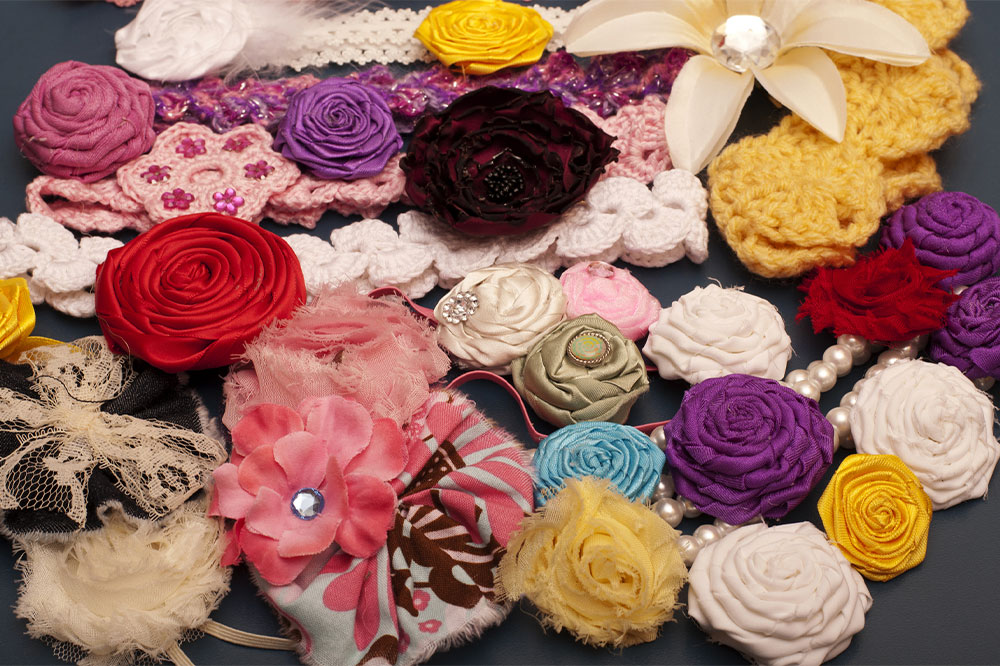Hobby ideas – Fiber and textile arts
Animal, plant, or synthetic fibers are used in textile art to make functional or ornamental pieces. Fiber art is the process of creating works using natural or artificial materials for sewing, weaving, crocheting, knitting, and embroidery. Cotton, linen, yarn, hemp, string, ribbon, wool, silk, acrylic, rayon, and several other materials can all be considered fibers. Here are several fiber and textile arts that would be wonderful to try and take up as a hobby.

Quilt art
A quilt style that strays from the conventional, traditional blocks and designs is known as quilt art. In this, the design is the main focus. It basically requires two layers of fabric, typically with a soft substance sandwiched between them. These layers are sewn together to make the quilt base on which the artwork is created. Some quilts are used for more utilitarian purposes, such as keeping warm, while others are displayed as fiber and textile arts.
Additionally, there are many other ways to produce art quilts, including abstract, improvised, collage, landscape, or nature-inspired, as well as pictorial or portrait quilts.
Additionally, there are many other ways to produce art quilts, including abstract, improvised, collage, landscape or nature-inspired, as well as pictorial or portrait quilts.
Lace making
The process of creating an openwork fabric by manually manipulating either a single thread (needlelace) or a number of threads (bobbin lace) creates lacing.
Lace is a fragile, web-like fabric that may be created by textile manufacturers using a variety of methods. Different varieties of lace come in a wide range of intricacies and are frequently used to accent or adorn clothing, furniture, and household goods. Bobbin lace, needle lace, and chemical lace are the three main methods used to create lace. The main purpose of lace is to provide decoration to other fiber and textile arts goods. For instance, many lace pieces are frequently used in bridal gowns, and the delicate fabric is frequently added to both formal and casual women’s clothing. Lace is frequently found on women’s gloves, stockings, and sweaters, in addition to being used in lingerie.
Embroidery art
Many people consider embroidery to be more of a craft than art. As a result, needlework is rarely considered alongside recognized fine fiber and textile arts disciplines such as leatherworking. However, embroidery exhibits the level of originality, color usage, subtle pattern alterations, emotional response to a specific environment or circumstance, and other characteristics associated with art.
Instead of using a brush, paint, pen, or pencil, embroidery employs a needle, thread, and other materials. Historical paintings frequently use embroidery; however, it is depicted as a detail rather than the main focus.
Rope making
Making ropes involves weaving together several strands of a material to create a single, more robust string. The material is twisted or braided to form the joined strands. The earliest known civilization to employ ropes was the ancient Egyptians.
Numerous vegetable fibers are employed in the production of rope, but none can match the strength, flexibility, and durability of ordinary hemp, which is why it is the mainstay of the rope-making industry. However, cotton ropes are significantly more flexible, robust, and durable, making them a lot better choice for power transmission in fiber and textile arts and other operations. A rope is made up of a specific number of “strands,” each of which is constructed of a few single threads or yarns.
Macramé (Knotting)
Macramé is a creative endeavor that requires you to use your imagination to the best of your ability. Any accessible material may be used to make macramé; you can either start with a leather strip or a fine thread you have at home. When you have a desire to create something new by just tightening a few knots, this pastime turns into a pleasurable activity. Among the various fiber and textile arts, this is something that even kids can do, and parents can get involved as well. Undoubtedly, the unique method used in macramé ensures that the finished product preserves the knots in their proper positions. But that’s not a huge issue since after a few early failures, you’ll soon learn how to accomplish it.
Tatting
A specific sort of lace that has been made for many years is called tatting. Many individuals have created brand-new methods for producing figures and much more using nothing more than a needle and thread. Additionally, it is a great way to spend a few hours in peace. Tatting is a lacemaking method that requires several instruments and approaches that differ slightly from conventional methods.
Pursuing fiber and textile arts may be a very enjoyable pastime, however, they do need a lot of time. As a result, it is advised for persons with plenty of spare time and the ability to construct or develop original designs.




